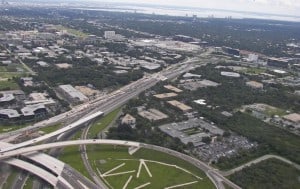 U.S. Transportation Secretary Anthony Foxx at the New York City Joint Management Traffic Center, revealed that New York City, Wyoming, and Tampa, FL will receive up to $42 million to connected vehicle systems with anonymous information shared with each other and their surroundings in real-time. The plan is to reduce congestion and greenhouse gas emissions. The technology could cut the unimpaired vehicle crash rate by 80 percent.
U.S. Transportation Secretary Anthony Foxx at the New York City Joint Management Traffic Center, revealed that New York City, Wyoming, and Tampa, FL will receive up to $42 million to connected vehicle systems with anonymous information shared with each other and their surroundings in real-time. The plan is to reduce congestion and greenhouse gas emissions. The technology could cut the unimpaired vehicle crash rate by 80 percent.
The cities are part of the Department of Transportation (USDOT) national Connected Vehicle Pilot deployment program.
The locations were selected in a competitive process.
New York City will install Vehicle to Vehicle (V2V) technology in up to 10,000 city-owned vehicles; including cars, buses, and limousines, that frequently travel in Midtown Manhattan, as well as Vehicle to Infrastructure (V2I) technology throughout Midtown. This includes upgrading traffic signals with V2I technology along avenues between 14th Street and 66th Street in Manhattan and throughout Brooklyn. Roadside units will be equipped with connected vehicle technology along the FDR Drive between 50th Street and 90th Street.
U.S. DOT awarded $17 million to solve rush hour congestion in downtown Tampa and to protect the city’s pedestrians by equipping their smartphones with connected technology. Tampa is measuring the environmental benefits of using this technology.
In Wyoming, the focus is on the efficient and safe movement of freight through the I-80 east-west corridor. Approximately 11,000 to 16,000 vehicles travel this corridor every day, and by using V2V and V2I, Wyoming DOT will collect information and disseminate it to vehicles not equipped with the new technologies.
These connected vehicles’ anonymous data that will be used for applications that will lead to smart vehicles, smart infrastructure, and ultimately smart cities. Research has found that the technology could reduce the 4.8 billion hours that Americans spend in traffic annually.